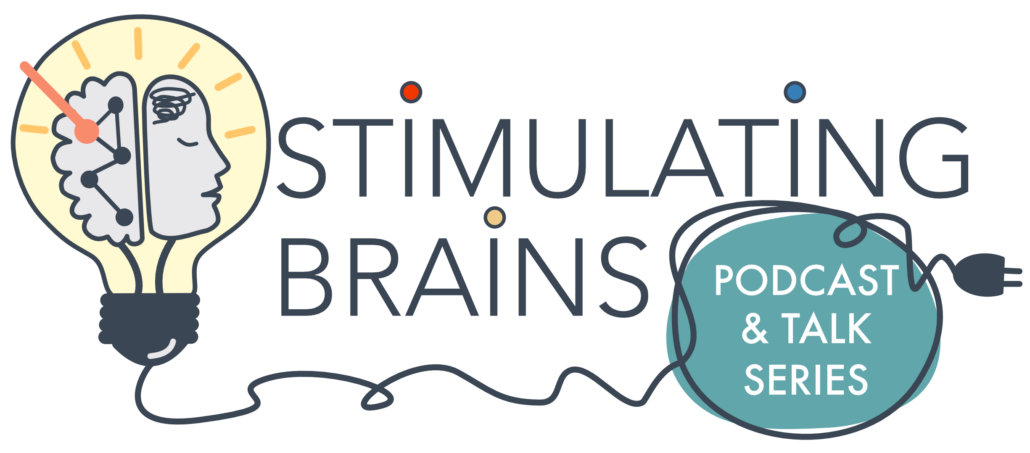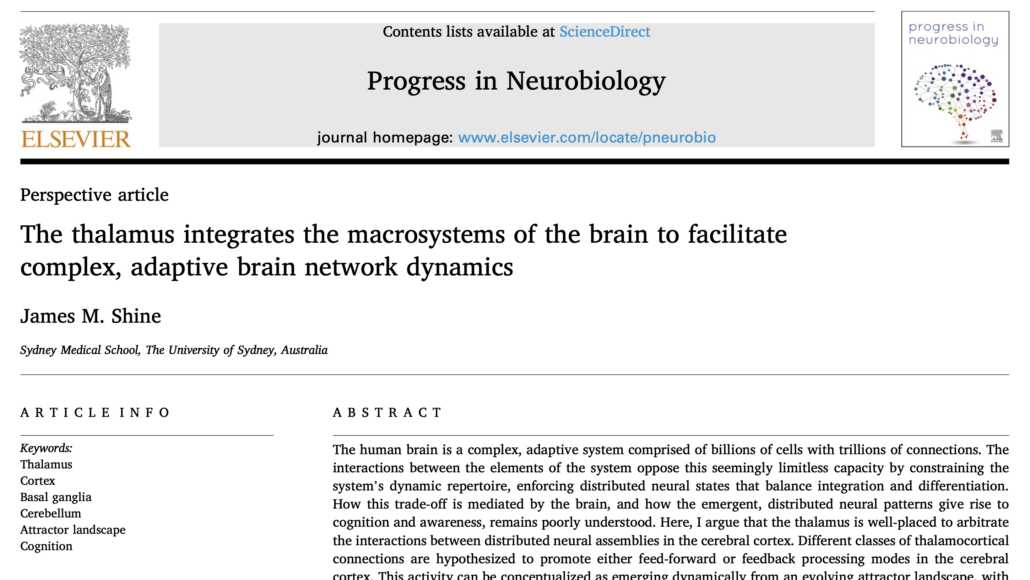#9: Mac Shine – A thalamus-centric view of basal ganglia, cerebellar and cortical interactions
Mac Shine and I talk about Mac’s recent intriguing opinion paper that may have radical implications for systems and clinical neuroscience. In it, the thalamus mediates between feed-forward type input from cerebellum, sensori nuclei and cortex one one hand and input from the basal ganglia that introduces an element of randomness. By projecting to the cortex in a specific manner, the thalamus can recruit these inputs to shape the attractor landscape of cortical activations. Mac develops this a theory from the cell- to the systems neuroscience level and hints at how Kahneman’s system I and II levels of thinking fast and slow could be implemented in the brain. The theory radically extends and partly opposes existing concepts such as the thalamus as a mere relay station and the model of the basal ganglia for action selection proposed by Alexander, DeLong and Strick in 1989 – so there is vast potential of this becoming transformative for deep brain stimulation, as well.
This episode strongly focuses on this excellent article published by Mac Shine in 2020: Shine, J.M., 2020. The thalamus integrates the macrosystems of the brain to facilitate complex, adaptive brain network dynamics. Prog. Neurobiol. 101951.
A thread summary on twitter by Mac can be found here.
Further papers by Mac we briefly touched upon:
- Shine, J.M., Shine, R., 2014. Delegation to automaticity: the driving force for cognitive evolution? Front Neurosci 8, 90.
- Shine, J.M., Breakspear, M., Bell, P.T., Martens, K.A.E., Shine, R., Koyejo, O., Sporns, O., Poldrack, R.A., 2019. Human cognition involves the dynamic integration of neural activity and neuromodulatory systems. Nat Neurosci 22, 1–15.





